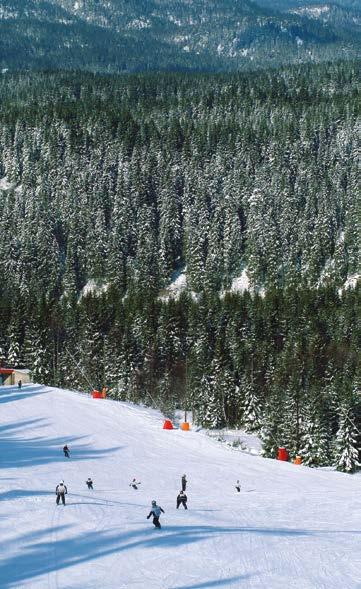
4 minute read
City and nature side by side
Tryvann Skisenter. © Nancy Bundt, VisitNorway.com

© VisitNorway.com
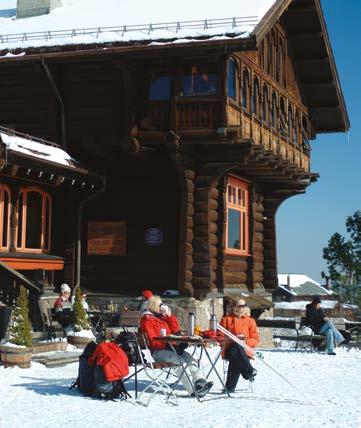
One of the aspects of Oslo that the locals value the most is having nature in the immediate vicinity. Sunday hikes, skiing in the winter, beach life in the summer – Norwegians need no excuse to take a break from city life and step into the more rural areas surrounding the city. From Oslo city centre, you can use public transport to travel to nearby mountains, forests, islands, farms and ski slopes, all less than an hour away. If you’re travelling to Oslo during the winter, you have a lot of chances to try your hand (or legs) at winter sports, whether you’re a professional or have never seen a pair of skis in your life. Legend has it that Norwegians are born with skis on their feet, but don’t let that discourage you; it doesn’t take much practice to get a whole lot of fun out of the various skiing options.
SKI LIKE A NORWEGIAN The largest ski resort in Oslo is Oslo Vinterpark (Oslo Winter Park), located at Tryvann. The park is 40 minutes away from the city centre on metro #1, and offers slopes for alpine skiing, snowboarding and cross-country skiing for all levels, including beginners. There are also terrain parks with elements like jumps, rails and a halfpipe for even more fun. Equipment for alpine skiing, cross-country skiing and snowboarding can be rented at the park, including clothes. The park also offers lessons through its ski school, where all instructors are certified. OSLO VINTERPARK
The park is open from December through to late April. Get metro #1 to Voksenkollen station, and walk the remaining 15 minutes or get a corresponding Ruter-bus (located next to Voksenkollen Station) straight to the park entrance.
G O T O B O G G A N I N G DOWN KORKETREKKEREN If you’re after a different kind of winter fun, how about going tobogganing? Get metro #1 all the way out to Frognerseteren station, where’ll you find the start of the biggest and most popular sledding run in Oslo, Korketrekkeren (The cork screw). Korketrekkeren is two kilometres long, and one trip down the whole run takes between eight and ten minutes. When you reach the end, you’ll find yourself at Midstuen metro station where, if you’re keen to go again, you can get the metro straight back up to Frognerseteren. Enjoying the slope is free of charge, and toboggans for hire are available from several outlets at Frognerseteren. The slope itself can get busy when the weather is nice, and adults outweigh kids both in size and numbers, so a lot of families visiting with small children prefer to play in the hill marking the beginning of the run. Also be aware that there are moose in the area, and people have been known to bump into them on the way down the run – quite literally. Stop for a break and a hot drink at the beautiful Kafé Seterstua and enjoy the view afterwards. KORKETREKKEREN
B Y P U B L I C T R A N S P O R T STRAIGHT INTO NATURE You don’t have to go to an actual park to enjoy hiking, biking or cross-country skiing, though. Marka (the woodland), the forested hills surrounding the city centre, is a recreational haven for all Oslo citizens, where they go to unwind, exercise, spend time with their family, and breathe clean woodland air. It’s located all around the city, and immediately reachable by public transport whether you go east, west, or north. MARKA
Marked slopes and hikes are available everywhere, and there are several cabins serving food or offering overnight accommodation.
Note: Make sure to catch the last ferry back to the city, as there are no other ways to get back. Langøyene is the only island where camping in a tent is allowed. Hovedøya, Gressholmen and Langøyene allow barbecues in designated areas.

© Nancy Bundt, VisitNorway.com
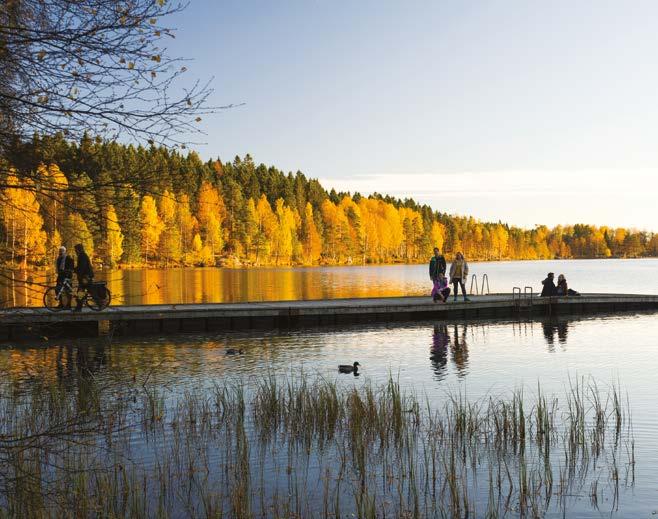
© Nancy Bundt, VisitNorway.com
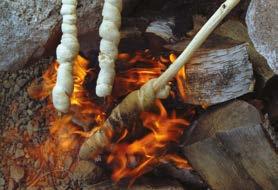
© Nancy Bundt, VisitNorway.com
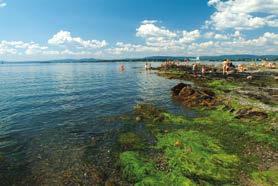
Hiking hacks Want to feel extra Norwegian? Bring a Kvikk Lunsj chocolate (a crunchier version of a KitKat, voted by The Guardian as the better of the two), an orange and a flask of hot chocolate or coffee, and reward yourself when you’ve reached the halfway point. If it’s sunny, make sure to use a decent SPF, as the snow reflecting the light makes sunburn a very likely occurrence.
Lake Sognsvann. © VisitNorway.com
VISIT THE FJORD BY FERRY In the summer, getting a ferry out to the islands in the Oslo Archipelago is very popular amongst Oslo citizens as well as tourists. At City Hall Pier 4 at Aker Brygge, you’ll find passenger ferries as part of the Oslo public transport system (#Ruter), taking you to several of the nearby islands. Each of them offers a unique experience, like Hovedøya with its lovely beaches and medieval monastery ruins, and the three connected islands of Gressholmen, Heggholmen and Rambergøya with excellent beaches and swimming opportunities. There’s also Langøyene, one of the most popular destinations, which is closed for renovation throughout 2020. The distances are short between the islands, so island hopping is a good way to see them all. Facilities vary on the different islands, but some of the bigger ones have kiosks and toilets with irregular opening hours, so bring snacks and drinks, just to be safe. The ferries run all year, though they’re more frequent during the summer months. OSLO ARCHIPELAGO










